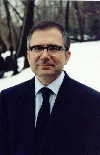 Commentary
CommentaryYears ago, the ASPR was one of the venerable institutions of psychical research. It was founded in 1885 through the efforts of William James, among others. In 1889 it became part of the Society for Psychical Research (British), but in 1906 it was reconstituted (Berger 1985). It regularly published the Journal of the American Society for Psychical Research from 1907 until about 1997, when its appearance became intermittent. In July 2007, the ASPR mailed out copies of its most recent issue—dated January-April 2004.
The Society’s website (www.aspr.com) currently includes three sample articles from the Journal. The most recent is from 1976—31 years ago. I could find no mention of any ASPR-sponsored lectures or conferences on the website. It is unclear what services the ASPR actually provides.
Its tax returns for the last several years list income from “membership dues and assessments.” The website indicates that regular membership is $70. Membership for seniors (over 65) is $45. Assuming that half of the members are seniors, the average dues are $57.50. The table below gives the estimated number of members based on these figures.
 In 1989 total paid circulation of the Journal was 1747 (McCormick, 1989).
In 1989 total paid circulation of the Journal was 1747 (McCormick, 1989).I briefly mentioned Ms. Keane in my book chapter “Anti-Structure and the History of Psychical Research” (Hansen, 2001, p. 197). She has provided a striking demonstration of the anti-structural effect of the paranormal on institutions.
In anthropological terms, anti-structure is a synonym of liminality. It is characteristic of the paranormal, and anti-structure helps explain why institutions in paranormal fields are exceptionally vulnerable to instability and fractionation. It also illuminates the paranormal’s marginality, which has been observed over thousands of years.
Parapsychologists resist the idea that their field is inherently marginal and unstable. But the entire history of parapsychology demonstrates the fact. The current condition of the ASPR is an example—and entirely consistent with trickster theory.
References
Berger, Arthur S. (1985). The Early History of the ASPR: Origins to 1907. Journal of the American Society for Psychical Research. Vol. 79, No. 1, pp. 39-60.
Hansen, George P. (2001). The Trickster and the Paranormal. Philadelphia, PA: Xlibris Corporation.
McCormick, Donna L. (1989). U.S. Postal Service Statement of Ownership, Management and Circulation. Journal of the American Society for Psychical Research. Vol. 83, No. 3, p. 287.

